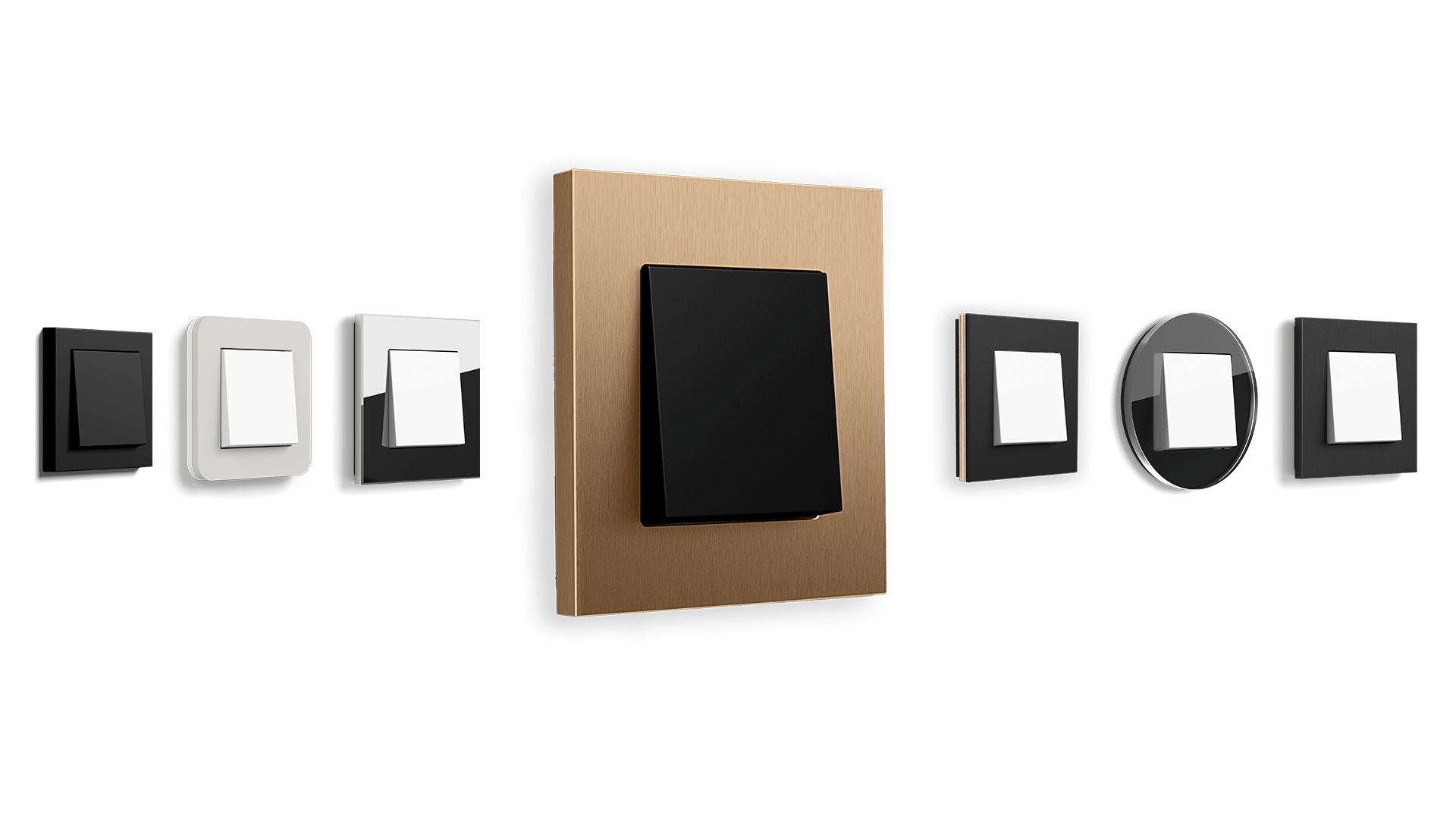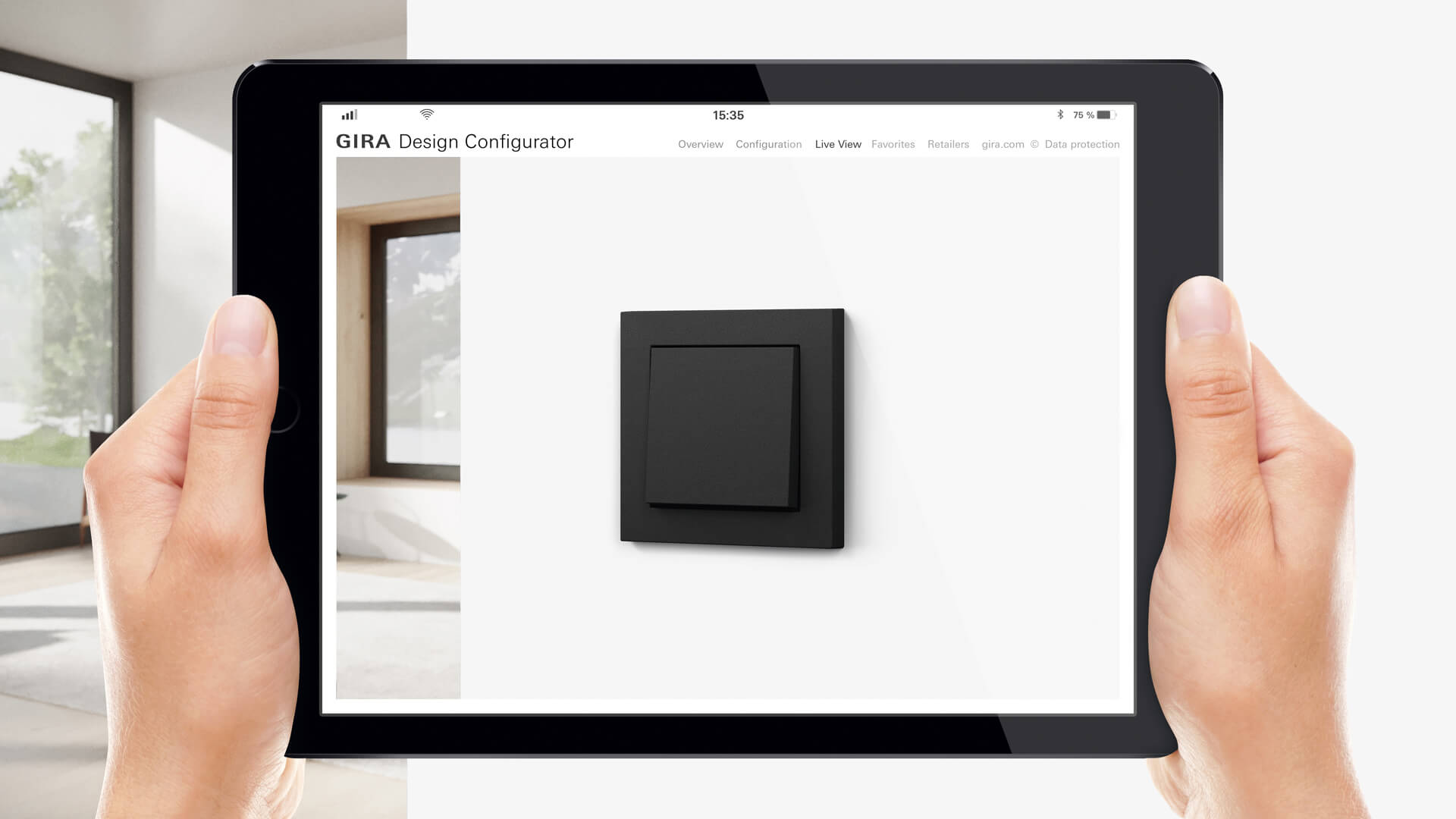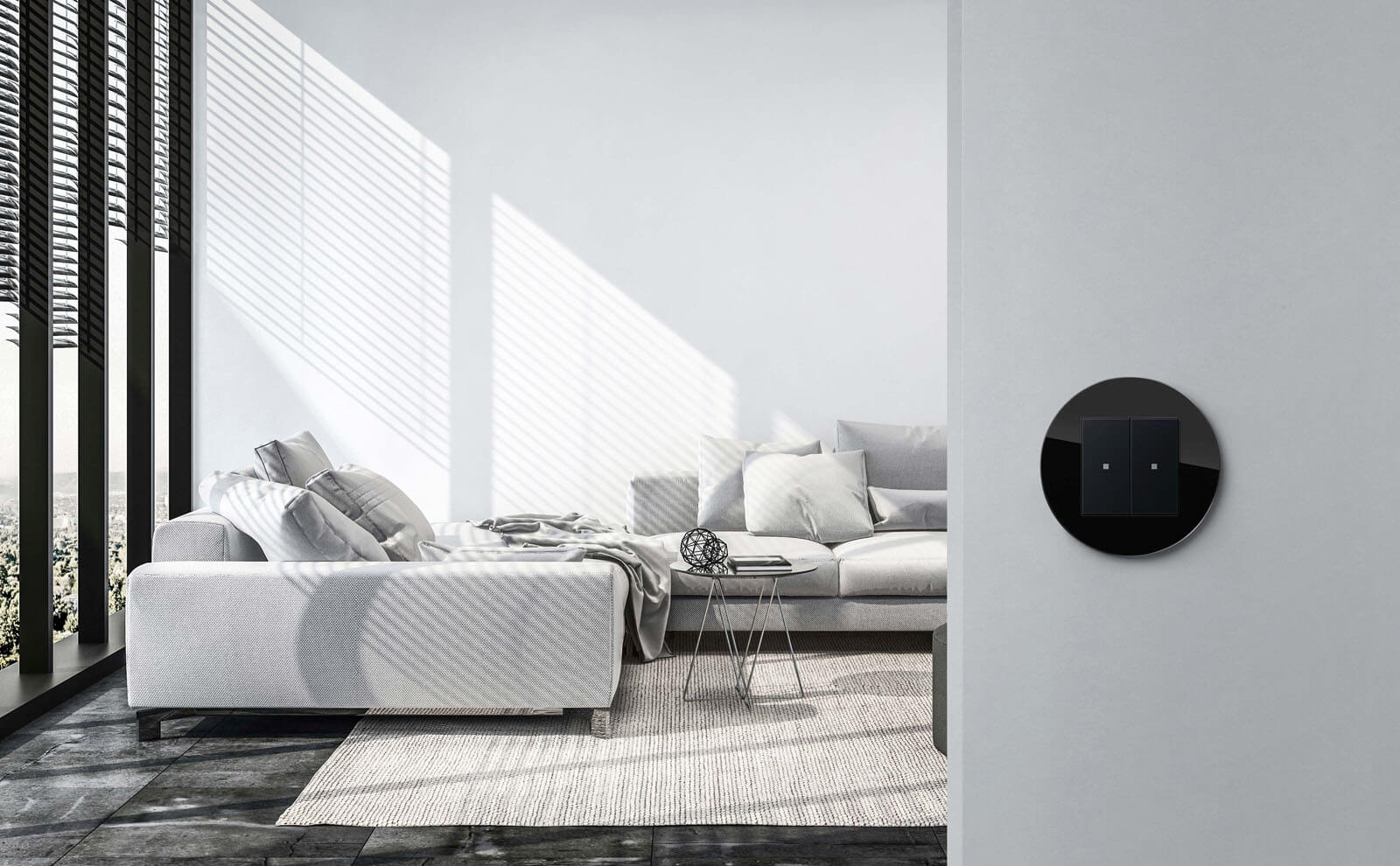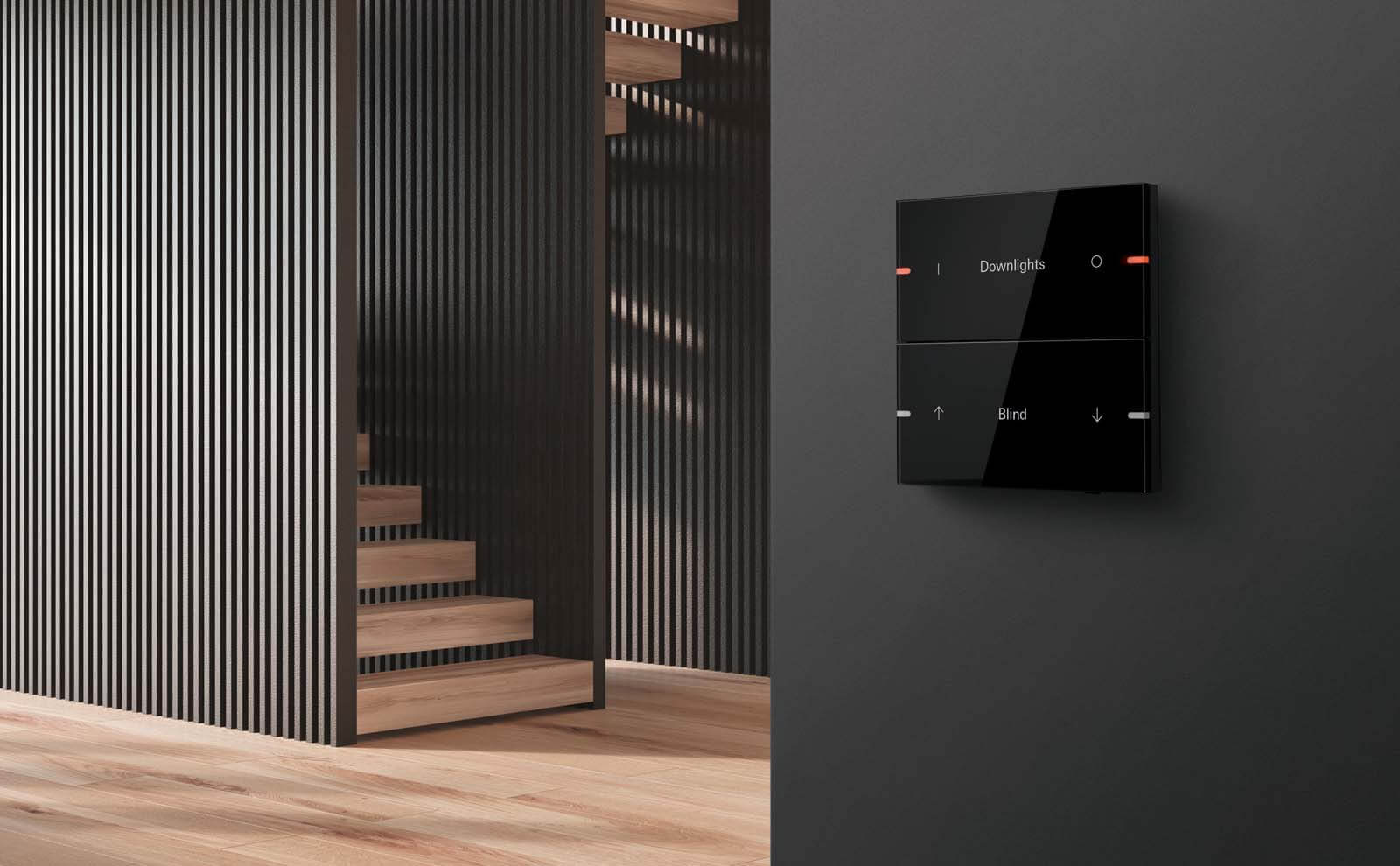
On or off, bright or dark – all it takes is a simple tap on the wall. In modern homes, you can even control your blinds or heating in the same way. But how do you know which installation is right for you? Here’s an overview of all types of (light) switches – including smart operating units.
The invention of electric bulbs in 1879 heralded a new era: light switches drastically improved people’s quality of life. First came the rotary switch, followed by the flush-mounted toggle variant.
What was once considered a ground-breaking innovation has now become a staple in any household. The range of options keeps expanding, as traditional light switch types are complemented by smart devices that cover a multitude of functions. In this article, we break down the characteristic features and differences of both conventional models and recent upgrades.
Classic types of electrical switches
1. One-way switches
The simplest form of lighting control is the so-called one-way switch, with a direct connection to only one lamp (or its cable). In contemporary homes, you may occasionally see it in small rooms (e.g. guest bathrooms and pantries) or basements.
2. Two-way switches
Moving one step further from the on/off solution, two-way switches allow you to control two lamps at the same spot. It consists of two separate rockers so that you can turn each lamp on or off individually. This solution proves convenient in rooms with at least two lighting sources – one on the ceiling and one beneath a wall cupboard, for example.
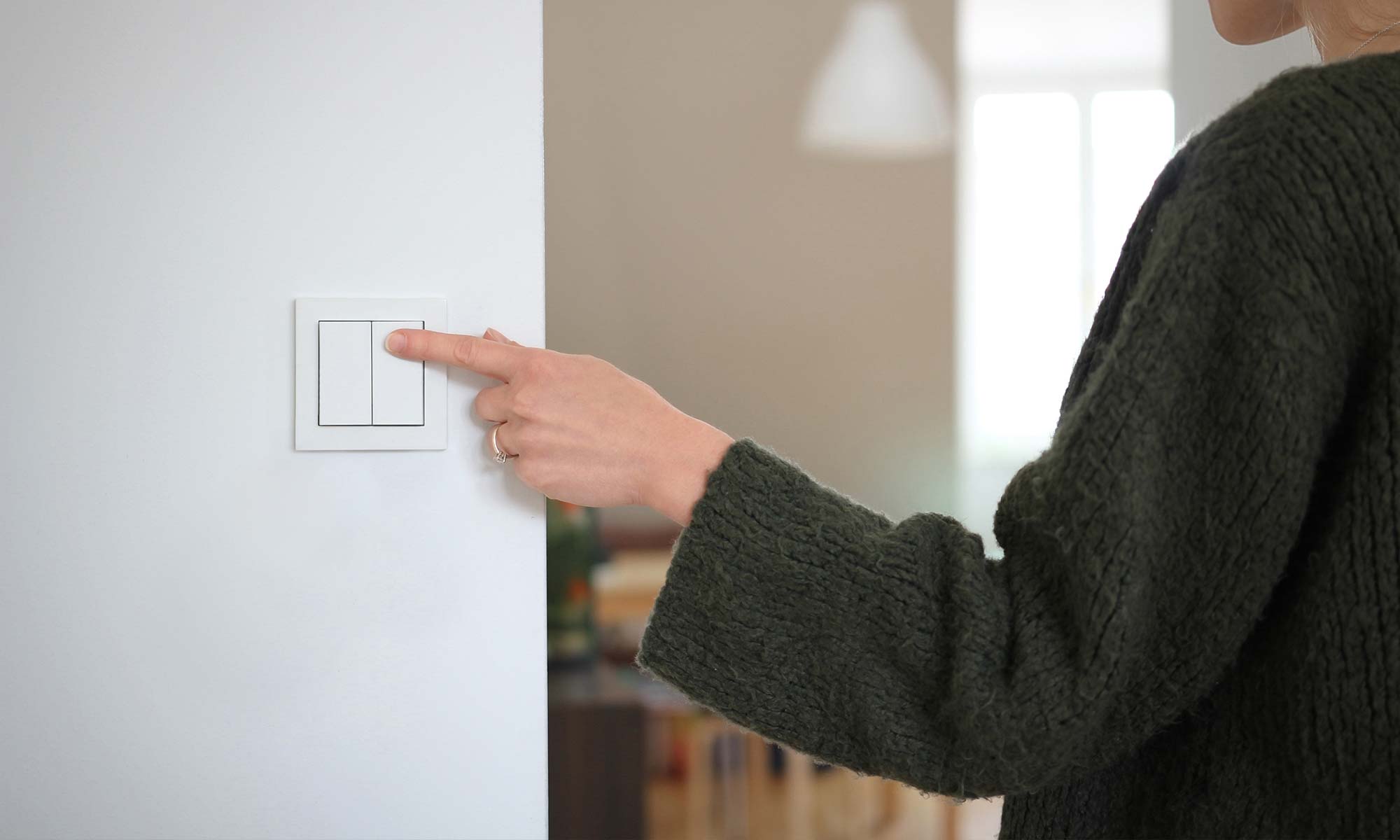
3. Toggle switches
One of the most common types of light switches are known as “toggles”. They work similarly to one-way models – except you can control one lamp from two different spots. Double toggle switches have a double rocker and rely on two electric circuits which are triggered separately. This makes it possible to combine two toggle switches in one flush-mounted box, so you don’t need a second frame on the wall.
Installations like these come in handy in long hallways or staircases, where you turn on the lights from alternating directions.
4. Crossover switches
In larger living areas, you’ll often find crossover switches. They enable you to operate one lamp from at least three different spots. In the bedroom, for instance, you might install this type of light switch next to the door and on both sides of the bed.
Switch types with special features
1. Control switches with LEDs
In hallways of apartment complexes and public buildings, toggle and cross switches commonly serve two purposes: apart from turning lights on and off, they also have a signalling function. A small integrated LED lamp helps you find the right spot in the dark or might indicate whether a bathroom is occupied or not.
2. Button, pushbutton, or switch?
At first glance, buttons and switches look quite similar. The difference lies in the technical details: if you press a switch, the light turns on and remains turned on until you press the switch again. With a button, however, the electrical current will only flow as long as you keep pressing it. The rocker jumps back into its original position as soon as you let go. That’s why buttons are mostly used for doorbells or door openers. Pushbuttons, on the other hand, combine the functions of both switch types. After briefly pressing it, the light turns on – but the button jumps back once you let go. Contrary to classic switches, the rocker of a pushbutton always rests in the same position (no matter if the light is turned on or off).
3. Light switch types with dimming function
Nowadays, switches can do much more than alternating between “on“ and “off“. Dimmers, which allow you to gradually adjust the brightness, have long found their way into our households. Sensitive touch surfaces take that functionality one step further.
The Gira System 3000 touch top unit, for example, combines switching and dimming in one device:
With a short tap, you can turn the lighting on and off.
With a finger swipe, you can precisely regulate the level of brightness.
4. Automated switches with motion sensors
Looking for a practical and energy-saving solution to control your lighting? Then you should consider installing motion and presence detectors in your home. This type of light switch works automatically, without you having to even lift a finger. Smart sensors register the level of brightness as well as movements and then react accordingly. There‘s also the option to set individual time schedules. Motion detectors prove especially helpful in outdoor areas, e.g. driveways or backyards. Indoors, they are often installed in rooms where you don’t spend a lot of time (i.e. basements, hallways, or garages). Thus, you won’t have to worry about wasting energy in case you forgot to turn off the lights.
5. Twilight switches with brightness sensors
Another convenient alternative for outdoor spaces are so-called twilight switch types. They work independently from manual control or time schedules and only react to changes of brightness. Once the daylight drops beneath a certain level at night, twilight switches will be activated automatically. At dawn, they will be turned off again when no longer needed.
6. Switch types for blind control
In addition to lighting, you can also adjust the position of your blinds, shutters, and awnings via switch. A two-part rocker installation with arrow symbols thereby serves as the operating unit: briefly pressing the switch is all it takes to make the blinds go up or down completely.
A blind control button, on the other hand, needs to be pressed continuously. Therefore, we recommend this switch type for groups of windows where you might want to activate single windows on occasion.
Different types of smart switches
1. Benefits of living in a Smart Home
Smart technology has brought a new dimension to the functionality of switches. Mechanical timers with rotary knobs have been replaced by electric devices that can store schedules for the entire day or week. This enables you to automate a variety of processes – including presence simulation or garden irrigation.
2. Smart light switch types for lighting control
In many modern-day homes, you hardly hear the typical “click“ sound anymore. You’ll still find switches on the wall – but they can be activated via app or voice command as well. Other than that, digital touch panels such as the Gira G1 offer a smart alternative to classic types of light switches. They are connected to a smart network in the background, e.g. a KNX system.
3. Smart pushbutton switch types
KNX is the universal standard for connected building technology. With this kind of network, you can explore the full potential of smart living comfort – not least thanks to operating units such as the Gira pushbutton sensor 4.95 . It covers up to eight individual functions, which are activated with a simple tap on the surface. You can thus control your lighting, blinds, heating, and even entertainment systems. A plus for lovers of interior design: the pushbutton sensor comes in a variety of colours and materials, including bronze and black glass.
The most important light switch types in a nutshell
One-way switch: one lamp & one switch
Two-way switch: at least two lamps & one switch (with a two-part rocker)
Toggle switch: one lamp & two switches (at two different spots)
Crossover switch: one lamp & three or more switches

